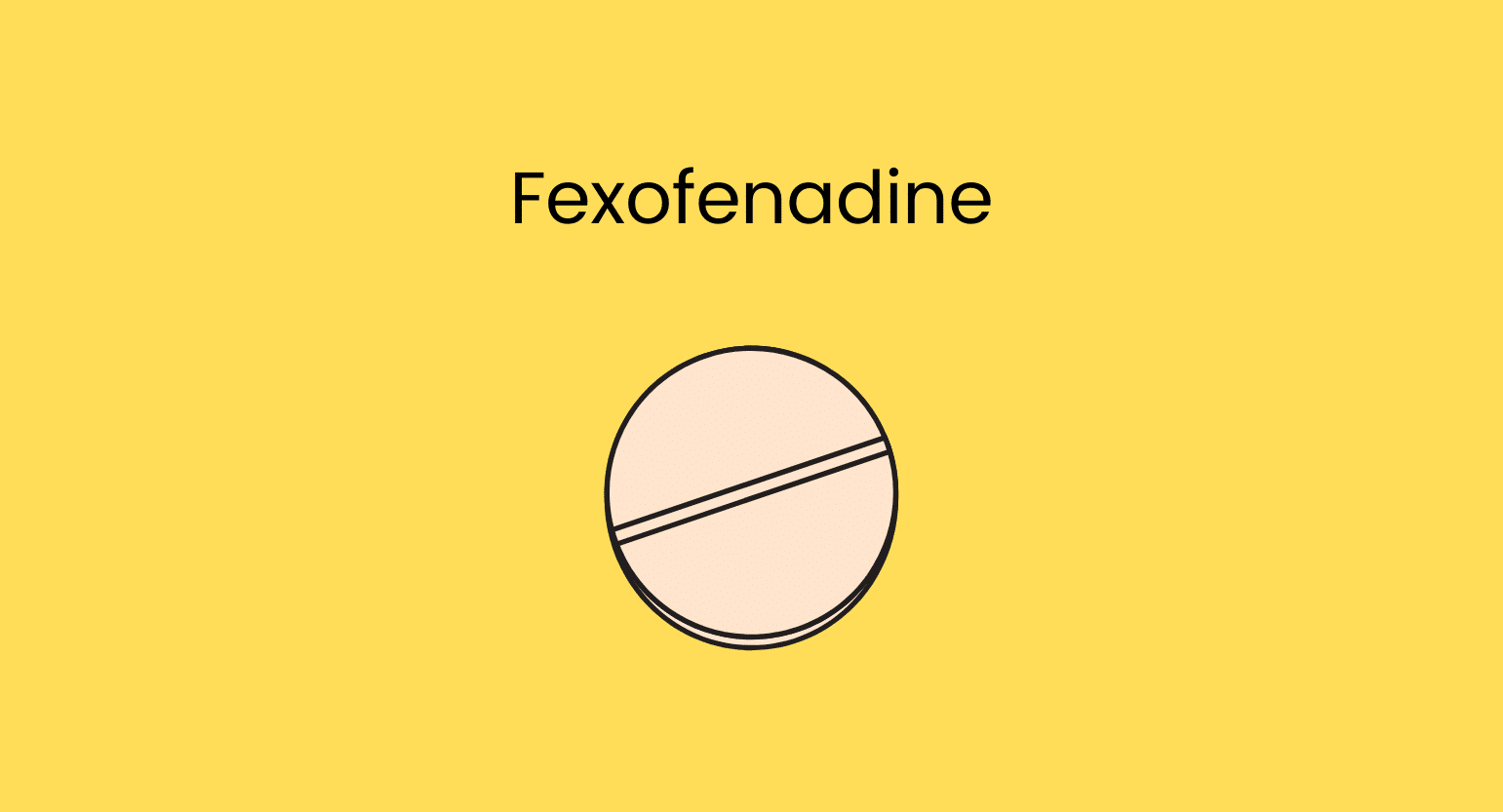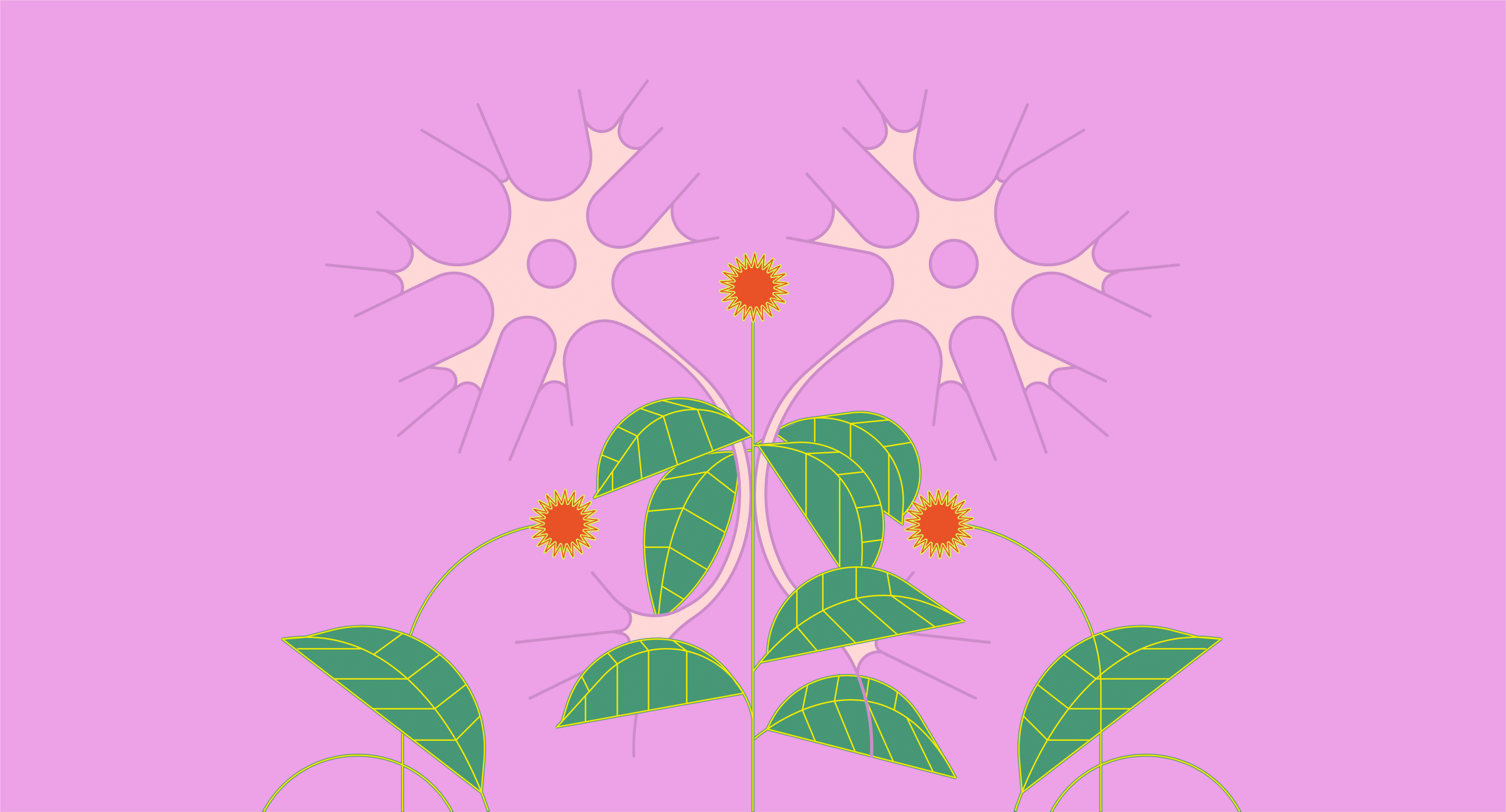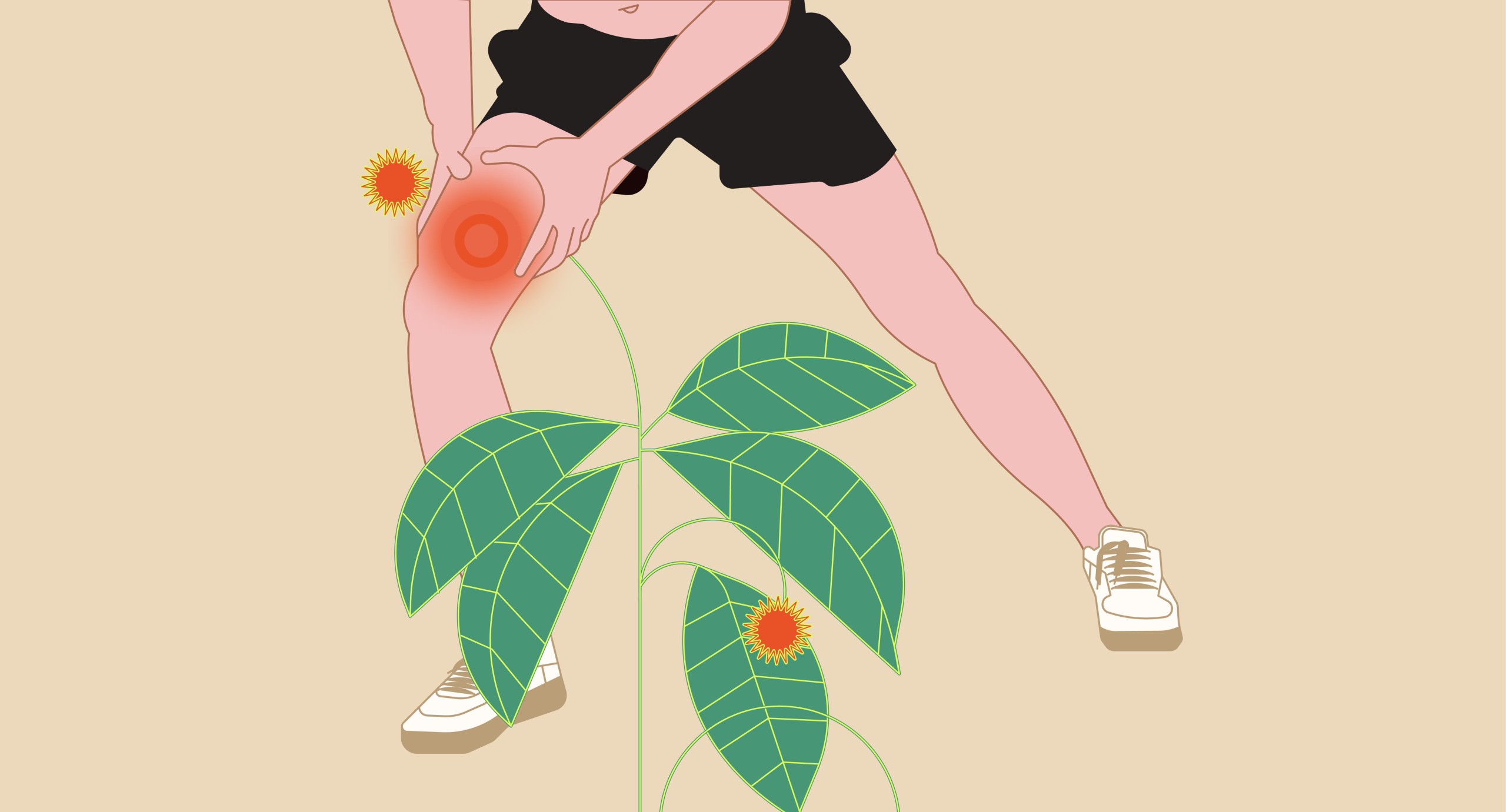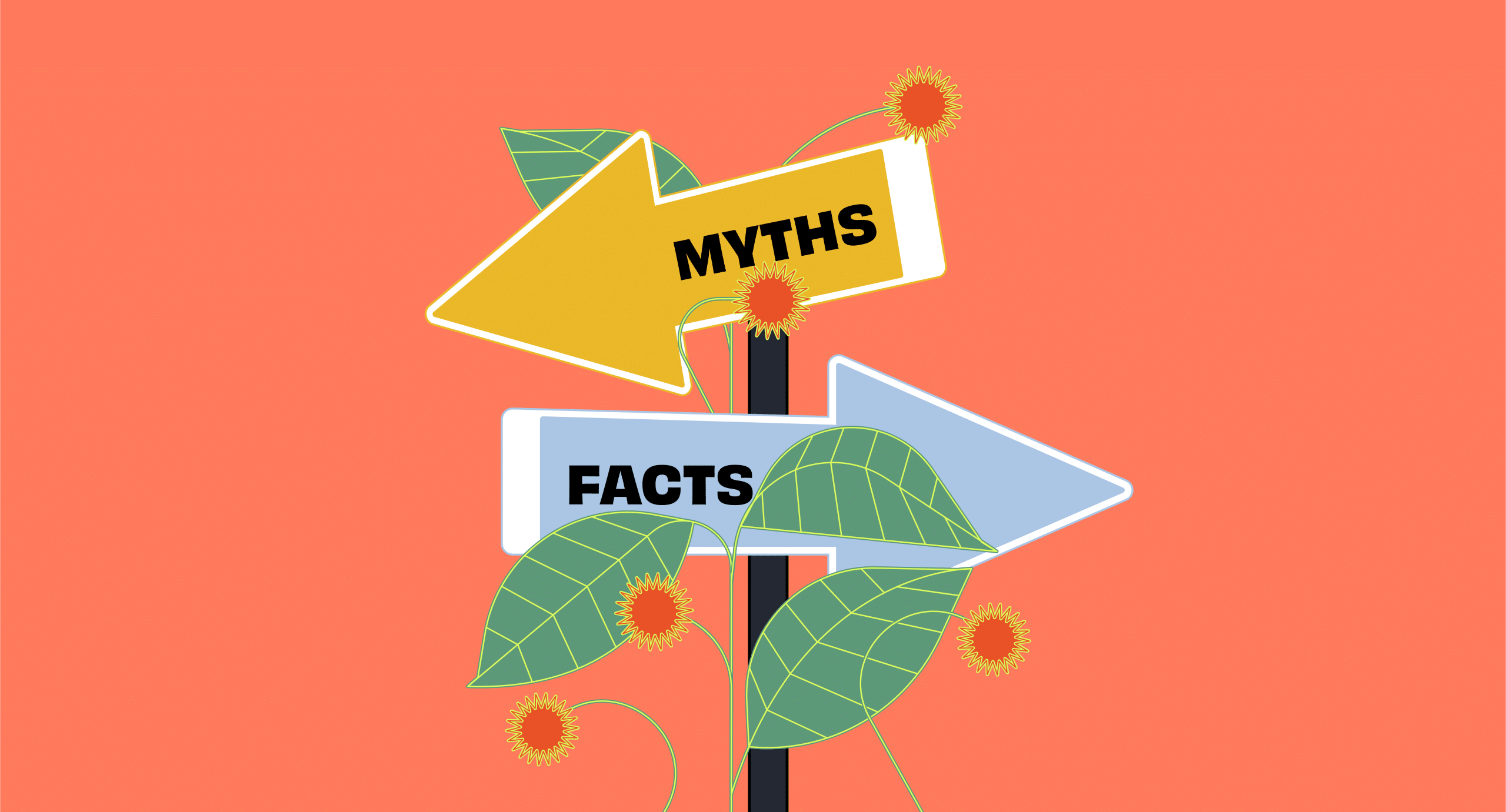Does Kratom Interact With Fexofenadine (Allegra)?
Yes, fexofenadine and kratom might interact with each other. This isn’t necessarily a dangerous interaction, but you need to be aware of it, and it’s always best to speak to your doctor before combining these substances.
Kratom and antihistamines interact primarily in their metabolism pathways. Some antihistamines act as metabolic competitors with kratom. This means that, when taken together, their metabolisms can be hindered, leading to elevated levels of the compounds in the bloodstream.
However, fexofenadine is minimally metabolized; only around 5% of it undergoes metabolization in the liver. Most of the compound is eliminated unchanged via feces and urine [1].
The likelihood of any adverse interaction from this combination seems low but still talk to your doctor.
Is it Safe to Take Kratom With Fexofenadine?
Very little scientific literature suggests a dangerous interaction between fexofenadine and kratom. If both compounds are taken with proper dosage and there’s no misuse, the risk stemming from an interaction should be negligible.
This, of course, does not mean there’s no risk. Mixing kratom with other medications will always carry the potential for severe adverse effects. Kratom has been minimally studied, so we still don’t know much. Always talk to your doctor before using it with other medications.

What is Fexofenadine (Allegra)?
Fexofenadine — sold commercially as Allegra — is an antihistamine medication used to manage and treat allergic rhinitis and chronic urticaria.
Histamine is an organic compound involved in local immune and other physiological responses.
Antihistamines work by blocking the activity of histamine receptors in the body.
There are several histamine receptors, and antihistamines are classified according to which receptors they inhibit. Fexofenadine is an H1-receptor antagonist.
H1 antihistamines are further classified as ‘first’ or ‘second’ generation.
Fexofenadine is a second-generation antihistamine and is not likely to cross the blood-brain barrier [2]. Because of this, it doesn’t cause much sedation like the first-generation antihistamines.
Fexofenadine Specs

| Drug Name | Fexofenadine |
| Trade Name | Allegra |
| Classification | Antihistamine |
| CYP Metabolism | CYP3A4 (Minimal). Most is eliminated unchanged via feces and urine. |
| Interaction With Kratom | Unknown |
| Risk of Interaction | Low to moderate |
What is Fexofenadine Used for?
According to the FDA, fexofenadine is approved for the following uses:
- Chronic idiopathic urticaria (hives)
- Seasonal allergic rhinitis
Fexofenadine relieves the symptoms of chronic idiopathic urticaria, like rashes and skin bumps.
It also relieves the symptoms associated with allergic rhinitis, such as sneezing, runny nose, itchy nose/palate/throat, watery eyes, etc.
However, it is important to note that fexofenadine treats only the symptoms and does not cure the underlying conditions.
The scientific literature suggests that fexofenadine is as effective as loratadine or cetirizine in treating allergic rhinitis [3]. Additionally, a 2018 review found it safe for individuals with inherited long QT syndrome [4].
What’s the Dose of Fexofenadine?
The usual dose of fexofenadine is 60 mg twice daily or a single 180 mg dose.
Patients with hepatic impairments should not exceed 60 mg in one day.
Lastly, children from 6 to 11 should take fexofenadine in 30 mg doses twice daily.
Whether the treatment is for seasonal allergic rhinitis or chronic idiopathic urticaria, these recommendations stay the same. However, it is best to take this medication following a doctor’s prescription.
Generic & Brand Name Versions
Fexofenadine is available under the following brand names:
- Allegra
- Children’s Allegra
- Mucinex Allergy
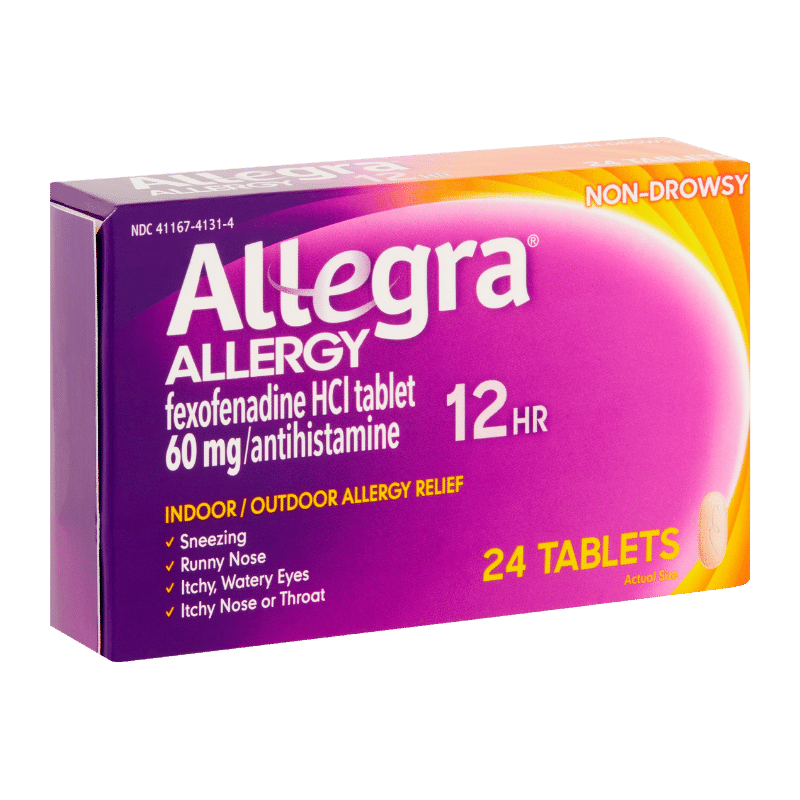
What Are the Side Effects of Fexofenadine?
The use of fexofenadine in controlled studies has led to the appearance of the following adverse effects [5]:
- Asthma
- Back pain
- Dry mouth
- Gastrointestinal symptoms, including abdominal pain, nausea, and diarrhea
- Headache
- Infection
- Nose bleeds
- Rash
- Sedation/drowsiness
- Upper respiratory complaints, including infection, sore throat, cough, and sinusitis
- Weakness
The most common of these are drowsiness, fatigue, and dry mouth.
There’s no absolute contraindication to fexofenadine unless you’re sensitive to one of its compounds. There’s minimal hepatic involvement in metabolization, so it is safe to use for people with liver pathologies.
What is Kratom?
Kratom (Mitragyna speciosa) is a native tree from Southeast Asia that has been used for centuries as traditional medicine thanks to its energizing and pain-relieving properties.
Kratom is only minimally processed; the leaves of the kratom plant are harvested and typically ground down into a powder. However, there are many other ways to take kratom, like brewing the leaves into tea, taking kratom capsules, or chewing on the raw leaves.
Kratom has many benefits due to the potent plant-based alkaloids inside it. These are natural compounds that often have pharmacological properties.
Scientists have identified mitragynine and 7-hydroxymitragynine as the two main alkaloids in kratom.

What is Kratom Used for?
There are many ways people use this kratom. We’re just now learning about its uses, but people in Southeast Asia, namely Vietnam, Thailand, Indonesia, and Borneo, have been using it medicinally for centuries. Kratom isn’t some holistic medicine based on folklore either — science backs up these traditional uses.
So, what can kratom do?
Here’s a look at some of its many benefits.
- Induces sleep
- Mentally and physically stimulating; provides focus, energy, and alertness
- Provides feelings of euphoria
- Powerful pain reliever
- Relieves symptoms of anxiety and depression
- Reduces symptoms of withdrawal

What’s the Dose of Kratom?
The effects kratom produces are dependent on the dosage.
This is the central fact to remember about kratom’s properties: if you don’t control the dosage, you won’t be in control of the effects.
Follow this basic dosing guide to achieve the desired effects. Just remember, everyone is different, and these are just averages; start low and go slow to find your optimal dose.
- Low dose (1 – 5 g): Acts as a stimulant and nootropic.
- Medium dose (5 – 10 g): Produces more potent analgesic and anxiolytic effects that crowd out the stimulating properties.
- High dose (10 – 15 g): Strong pain and anxiety with sedation.
Also see: How Much Kratom is Too Much?
What Are the Side Effects of Kratom?
Kratom consumption can cause several side effects, though they’re usually not serious.
The most common side effects include:
- Constipation
- Dizziness
- Insomnia
- Itchiness
- Loss of muscle coordination
- Nausea
More serious adverse effects include:
- Low blood pressure
- Low libido
- Poor appetite
- Seizures
- Tremors
The most significant adverse effect of kratom is the potential to develop an addiction. Even then, kratom addiction is vastly different than an addiction to opioids. It’s not as strong, and the withdrawal symptoms are easier to manage and overcome. Plus, kratom is generally safe and unlikely to cause overdose or death.
These occurrences are extremely rare and almost always involve other drugs. Kratom is less harmful in this sense than pharmacological drugs. Make sure you use kratom responsibly, and you’ll avoid these issues.
Suggested Reading: How Long Should I Wait Between Doses?
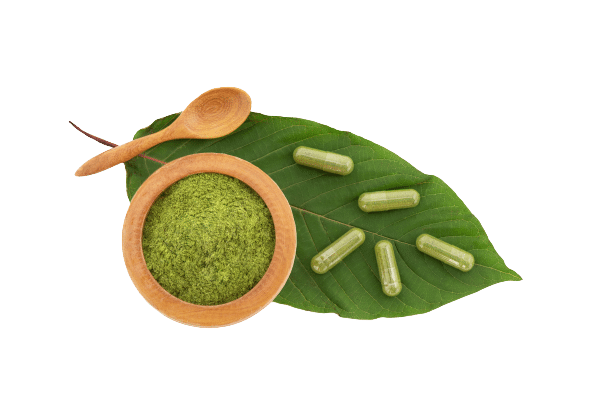
What Are the Different Types of Kratom?
As we mentioned, the dose will highly influence the effects you feel, but there’s another thing you need to consider — strains.
While it can get overwhelming, this is excellent news because these strain types allow you to further personalize your kratom experience.
Even though all strains have the same basic effects, each one excels at producing certain benefits more than others.
Here’s a look at how strains are categorized and the tendencies of each group.

White Vein Kratom
White vein kratom is most associated in the kratom community with the nootropic and stimulant benefit of the plant.
If you are mainly interested in kratom as a mental supplement or as a way to improve your mood, white vein kratom will give you the biggest bang for your buck.

Red Vein Kratom
Red vein kratom works best if you want to take advantage of its pharmacological aspects.
Those with chronic pain or other conditions usually gravitate towards this strain because of the relief they provide.
However, it is also adept at producing generalized sedative effects and feelings of relaxation. Many use it as a sleeping supplement.

Green Vein Kratom
Green vein kratom is slightly different from red and white. Instead of providing a targeted experience, green strains give the whole range of kratom’s benefits without overly emphasizing one aspect.
This isn’t effective if you really need energy or pain relief, but it’s a great choice for those that want a little bit of everything.

Yellow Vein Kratom
Yellow vein strains are similar to green, except less potent. In fact, it’s the weakest of all the strains in potency: perfect for first-timers!
One theory is that yellow strains are a mix of white and red. Many people prefer these strains and don’t find them weak or ineffective.

Key Takeaways: Is it Safe to Mix Kratom & Fexofenadine (Allegra)?
Mixing kratom and fexofenadine likely won’t cause any severe side effects. Both can cause sedation, which can be dangerous; however, the likelihood of fexofenadine causing marked sedation is low.
Still, there are too many unknowns when it comes to kratom. It’s always best to talk to your doctor before using it with other medications.
Remember to be on the lookout for any signs of kratom addiction and follow the recommended safety protocols for both compounds.
- Smith, S. M., & Gums, J. G. (2009). Fexofenadine: biochemical, pharmacokinetic and pharmacodynamic properties and its unique role in allergic disorders. Expert opinion on drug metabolism & toxicology, 5(7), 813-822.
- Compalati, E., Baena-Cagnani, R., Penagos, M., Badellino, H., Braido, F., Gómez, R. M., … & Baena-Cagnani, C. E. (2011). Systematic review on the efficacy of fexofenadine in seasonal allergic rhinitis: a meta-analysis of randomized, double-blind, placebo-controlled clinical trials. International archives of allergy and immunology, 156(1), 1-15.
- Simpson, K., & Jarvis, B. (2000). Fexofenadine. Drugs, 59(2), 301-321.
- Welzel, T., Ziesenitz, V. C., Seitz, S., Donner, B., & van den Anker, J. N. (2018). Management of anaphylaxis and allergies in patients with long QT syndrome: a review of the current evidence. Annals of Allergy, Asthma & Immunology, 121(5), 545-551.
- Craun, K. L., & Schury, M. P. (2020). Fexofenadine. StatPearls [Internet].

